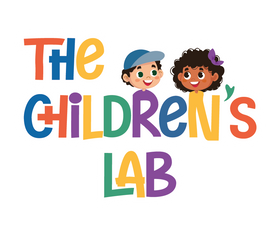
5 Fun Sensory Bin Ideas for Toddlers
5 Fun Sensory Bin Ideas for Toddlers
Here are five sensory bin setups your little one will love:
1. Color Sensory Bin
Use dyed rice or pasta in rainbow colors. Add matching colored cups or toys to promote color recognition and sorting.
Great for: Ages 1.5–4
Skills: Color sorting, vocabulary, and matching
2. Nature Sensory Bin
Collect leaves, small sticks, pinecones, and pebbles. Add in a few toy insects or animals to complete the woodland vibe.
Great for: Ages 2–5
Skills: Nature exploration, imaginative play
3. Under the Sea Bin
Use blue-colored rice or water beads. Add seashells, fish figurines, and a small net for pretend fishing.
Great for: Ages 2–5
Skills: Storytelling, ocean life learning
4. Alphabet Adventure Bin
Hide plastic or wooden letters inside a bin of oats or rice. Give your child a mini scoop and a chart to match letters they find.
Great for: Ages 3–5
Skills: Letter recognition, phonics
5. Scooping & Pouring Station
Fill the bin with dry pasta and give your child different-sized cups, funnels, and jars to pour and transfer.
Great for: Ages 1–3
Skills: Fine motor, hand-eye coordination
Sensory Bin Activities for Preschoolers
As your child grows, sensory bin play can become more structured and educational. Try these:
1. Sorting by size, color, or shape.
2. Digging for hidden letters or numbers.
3. Scooping & measuring games.
4. Creating scenes or small worlds (e.g., a dinosaur land or a market stall)
5. Practicing storytelling with character figurines
Tips to Keep Sensory Play Clean & Fun
Worried about the mess? Here are a few tips to keep things tidy and stress-free:
1. Place a plastic mat or tablecloth under the bin
2. Use a shallow bin that’s easy to reach into but doesn’t spill
3. Teach kids to keep materials inside the bin
4. Store tools and fillers in zip-locks or containers when done
With just a little setup, cleanup becomes quick and easy!
Who Benefits Most from Sensory Bins?
Sensory bins are perfect for:
1. Toddlers (1–3 years): Exploration and motor development
2. Preschoolers (3–5 years): Pre-academics and imagination
3. Children with sensory processing needs: Calming and regulating play
Even older kids love sensory bins when paired with thematic learning—such as planets, dinosaurs, or habitats.
Where to Get Sensory Kits?
If you’re just starting out, we recommend The Children’s Lab Sensory Starter Combo, which includes:
1. Colorful rice and pasta
2. Scooping tools
3. Storage box
4. Bonus play prompts!
You can also explore smaller kits like:
1. Rainbow Pasta Mini Kit
2. Rainbow Rice Mini Kit
3. Dough It (for themed playdough-based sensory bins)
All products are non-toxic, safe, and designed for curious little hands.
Final Thoughts: The Power of a Simple Bin
Who knew a plastic bin could hold so much learning?
Sensory bins aren’t just fun—they’re a powerhouse of development. From fine motor skills to emotional regulation, language growth to imaginative storytelling, these bins are versatile tools every parent should have.
And the best part? You don’t need expensive toys or complicated prep. Just a bin, some rice or pasta, a few tools—and a spark of creativity.
Start small, observe what your child enjoys most, and keep rotating new sensory themes to keep the excitement alive!
FAQs
1. What age is best to start sensory bin play?
Sensory bins can be introduced as early as 12 to 18 months, depending on the child's motor skills and tendency to mouth objects. Always supervise young toddlers closely and use taste-safe fillers like oats, rice, or cooked pasta for younger children.
2. What can I put in a sensory bin for toddlers?
You can use a variety of safe and engaging fillers such as rice, pasta, oats, water beads (for older toddlers), pom-poms, cotton balls, or even shredded paper. Add scoops, cups, animal figurines, or theme-based toys to enhance the play experience.
3. How do sensory bins help child development?
Sensory bins support development in multiple areas:
1. Fine motor skills (scooping, pouring, grabbing)
2. Cognitive skills (sorting, matching, problem-solving)
3. Language development (describing textures, narrating play)
4. Emotional regulation (calming sensory input)
They offer a hands-on way for toddlers to explore and learn.
4. How long should toddlers play with sensory bins?
Sessions can last 15–30 minutes depending on the child’s interest and age. The goal is quality over quantity. Some kids may get deeply engaged, while others may prefer shorter bursts of play. Follow your child’s lead and gently introduce new themes to sustain curiosity.
5. Are sensory bins messy? How can I control the mess?
Sensory bins can get a bit messy, but with the right setup, it’s easy to manage:
1. Place a mat or tray underneath
2. Choose a shallow, wide bin
3. Establish “keep it in the bin” rules early
With consistent use and guidance, toddlers learn how to play while keeping cleanup minimal.
